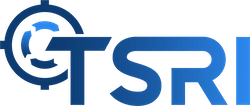Displaying items by tag: legacy applications
Common Misconceptions About Modernization (And What to Do About Them)

Downtime, lack of agility, and vendor lock may keep organizations from modernizing their aging legacy applications, but plenty of other roadblocks, whether technical or psychological, can also stand in the way from an organization from undertaking a high-stakes modernization effort. For example:
- One TSRI defense client had been using the same COBOL mainframe applications for nearly 50 years. The agency expected that migrating away from this mission-critical system would require downtime that could have led to data loss, mission interruptions, and catastrophic security failures.
- Another client, a large European bank, used mainframe applications that could have served them well for another decade or longer. However, upstart digital competitors were running circles around this financial powerhouse. They needed more agility.
- Another defense client wanted to migrate its applications to Amazon Web Services but worried about limited options. Their mainframe used a proprietary architecture and applications, and the agency was locked into long-term contracts that would have prevented them from undergoing a transformation. This agency needed assurances a transformation could be done—and done properly.

Understanding and Overcoming the Misconceptions and Fears
If you’re a change maker in your organization — whether on the business or IT side — you probably see the need to modernize your applications. Throughout our 26 years of modernizing critical applications, we have found that many perceived obstacles are actually misconceptions, fears, uncertainties, or doubts that arise due to a lack of information.
Here are the most common misconceptions and obstacles, and how we help our clients get around them:
Obstacle 1: “It Will Cost Too Much!”
Cost almost always rises to the top of the list. From an OpEx perspective, once a modernized system goes into production, your organization can achieve savings quickly and dramatically. One client reduced its IT operations costs from over $1 million to tens of thousands of dollars—per month. While not every transformation will yield remarkable savings like that, your organization will recoup its modernization costs quickly.
In addition, because an automated transformation is much less likely to produce the inevitable errors produced by humans—we are, after all, only human—that means far lower instances of cost overruns.
Obstacle 2: System Downtime
Many organizations see time to market and system downtime as major concerns. Undertaking an automated modernization will be the fastest, most reliable alternative nearly all the time. As opposed to rewriting all or most of the code in the target language by hand, a fully automated transformation can take months—if not years—off the timeframe to bring the modernized application into production. Such automated modernizations also can give you the option to run your applications in the legacy and modernized environments side by side for testing, and then flip the switch to put the new environment into production with very little, if any, downtime—which means no disruption to the business.
Obstacle 3: “If it Ain’t Broke, Don’t Fix it!”
Organizations may also face the dilemma of making change if there isn’t a need to change. Such attitudes can be embedded into an organization’s culture, and convincing top management to commit to large expenditures where much of the beauty lies under the hood can be a heavy lift. However, external issues may force a modernization—oftentimes when it’s too late.
Most enterprise companies and government agencies running mainframes historically had armies of programmers that maintained their systems. As the decades rolled by, however, most of those programmers retired from the workforce while computer science programs shifted to educating on modern, object-oriented languages like C# or Java. As one client discovered for PL/1, a much more obscure mainframe language, the agency that ran the application found only a single person in the entire country capable of supporting the application. That was clearly not a sustainable solution.
Even more challenging, the language or platform itself may have survived past its reasonable lifespan. TSRI has modernized applications originally housed on mainframes built by Wang. The company ceased to exist in the 1990s and its subsequent iterations no longer supported a version of COBOL proprietary to its systems. At that point, modernization wasn’t a luxury—it was a necessity.
Obstacle 4: The Knowledge Gap
Finally, when a legacy system has been in service for 40, 50, or even 60 years, the original developers will doubtfully still be a part of the organization. Institutional knowledge can be passed down, but most IT leaders won’t have a clear view of what their systems can do. The transformation engine that takes on an automated modernization can also generate documentation that provides a detailed blueprint of an application today and how it will function in the modern target language. Those insights will help the engineers who maintain the application understand how a modernization can achieve their business goals.
Face the Fear and Reap Big Rewards!
Undertaking a drastic change like modernizing an application comes with risks and likely some trepidation, but it also creates opportunities that might never have been possible by continuing to maintain a legacy system. Completion of a successful transformation will not only save your organization money and give you better access to development resources, it will make your organization more agile and provide you with modern tools to better serve your end users.
TSRI is Here for You
As a leading provider of software modernization services, TSRI enables technology readiness for the cloud and other modern architecture environments. We bring software applications into the future quickly, accurately, and efficiently with low risk and minimal business disruption, accomplishing in months what would otherwise take years.

